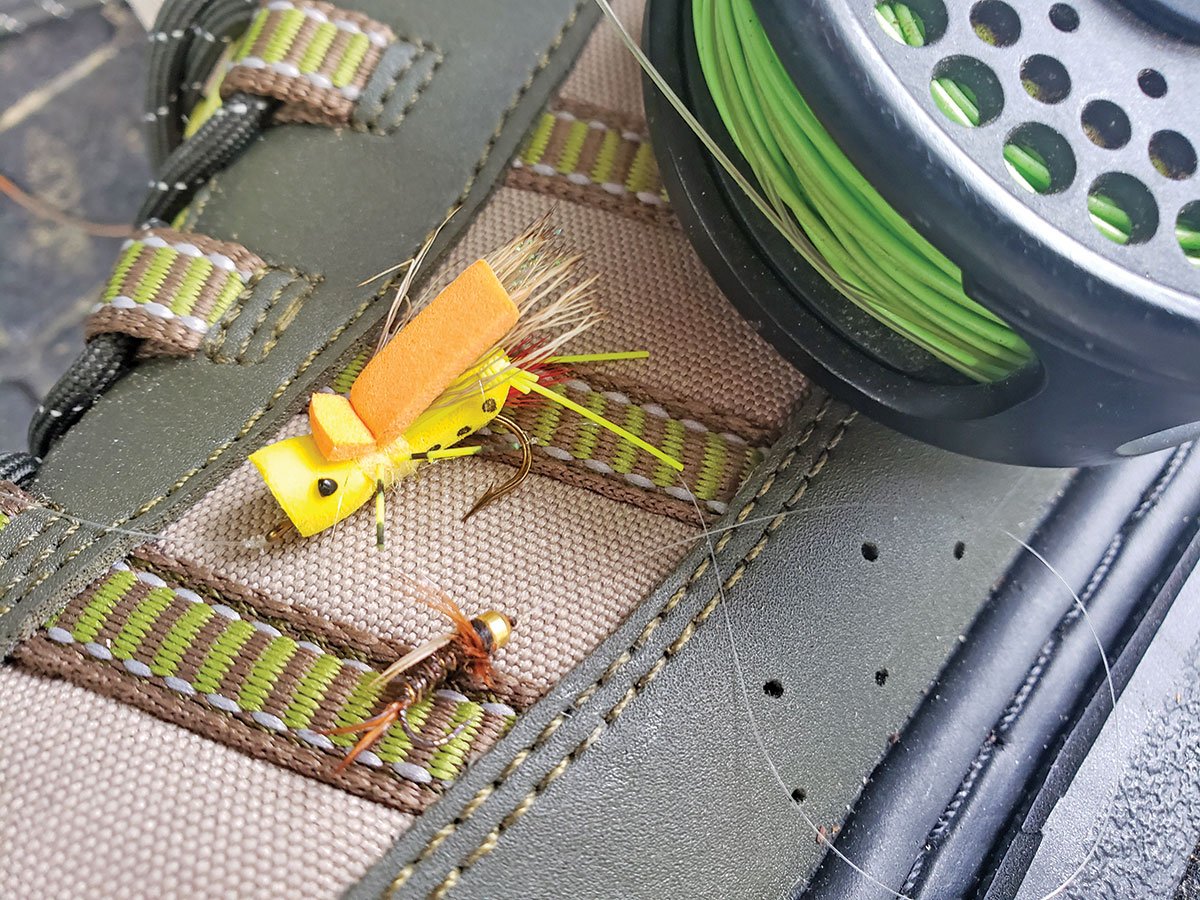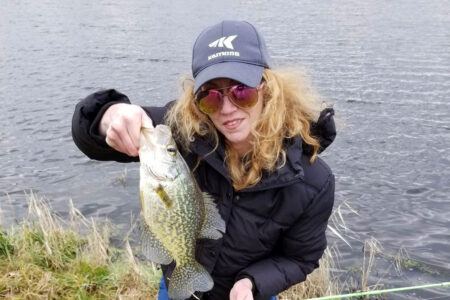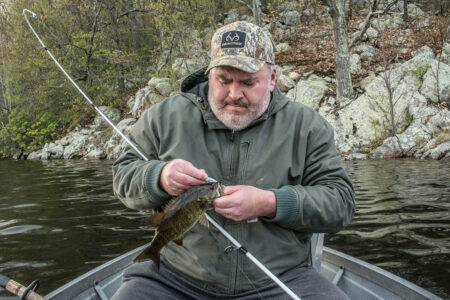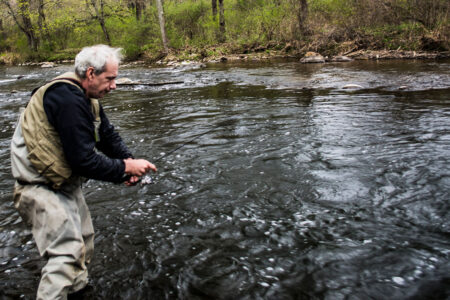
Grasshopper imitations and their dropper nymphs bring Turkey-month trout to the table.
It’s pushing the envelope season-wise, but the thrilling late September through October topwater terrestrial action can extend well into November. Of course, weather, in the form of a prolonged (four- to five-day) cold snap with daytime temperatures in the 30s, especially around mid-month, will spell the death knell to grasshoppers and their cricket counterparts, but these landlubber bugs can be pretty protean in that we’ve had them flushing in front of us when walking through high grass and weeds after a couple of days when daytime temps peaked at only 40 degrees with nights in the chilly mid-30s. It was late in the morning the first Saturday in November and the targets were stocked pheasants, not stocked trout.
Fast-forward a couple of days and it was a glorious Indian Summer afternoon complete with near 70 degrees, bright sun with patch clouds, and breeze with just enough oomph to wave the high weeds and bend the ends of thinner branches where some leaves precariously clung. And the trout through that stretch of river, some holdovers from the releases in spring and the one from barely a month previous, certainly recognized what the legged, foam imposter represented.
The Hopper
Grasshopper patterns are legion, differing in size, materials, colors and textures. Some are surprisingly realistic while others give a vague-but-familiar profile to salmonids eyeballing from below. The common denominator is that these have no hackles at the throat and lay flat in the surface film as a real terrestrial would. Hackled hopper imitations sit unnaturally-high on the surface. Sure, we’ve caught trout on them, also smallmouth, but in nowhere near the numbers since employing the hackle-free varieties.
Hopper sizes generally range from No. 6 to No. 10, but we’ve seen some Jurassic specimens tied on No. 4 hooks. No doubt there are jumbo grasshoppers out there, the Apache helicopters of the winged terrestrial bug world, and if you’re specifically seeking the biggest trout a venue has to offer, then go with the biggest winger you can find or tie and work effectively. From this corner, we prefer more hits than misses, so sticking with Nos. 8 and 10 is our preference.
The Dropper
The dropper angle was availed a few years ago while watching a guy catch a brown, and then a rainbow, from a stretch above that I’d finished working about 20 minutes previous. Save for a pugnacious 8-inch smallie, not a taker of the faker. Sitting bank-side and watching the cast-mend-twitch-mend and then seeing the lift result in a bent rod, I couldn’t help but engage when he left the flow and wandered down along the path.
So simple a setup that had me wanting to smack my forehead: a No. 14 bead head nymph knotted to an 8- or 9-inch length of tippet tied to the bend in his hopper fly. “Gives ‘em two things to look at. Both fish took the nymph,” I thought.
Since then, the dropper has been a part of the late-season hopper fishing approach. While the majority of the trout have been taken on the terrestrial, enough have inhaled the teaser to the point that it’s a must-use. Curiously, some of the bigger fish have been caught on the much smaller dropper.
When probing a venue with deeper pools and runs, it’s generally a No. 14 bead head Prince, Pheasant Tail or Hare’s Ear for the dropper. On shallower swims, it’s a thin sparsely-dressed wet such as an attention-getting Queen of Waters or a buggy-looking Black Gnat.
The Work
Simple is as simple does. I tie our leaders, and for this type of fishing I keep them to around 8 feet down to a 4X fluorocarbon tippet. To the bend it’s an 8-inch length of 5X fluorocarbon tippet to the nymph or wet.
A quartering across and upstream cast, and bear in mind that it’s the splat of the fatty hopper that piques the interest of nearby fish. Follow the drift, mending the line while giving life to the hopper and dropper with short upward flicks of the wrist. The mend is critical, as drag will kill any interest a trout, even if a recent stockie, will have in the potential meal.
An added bonus of the 2-fly approach is that the hopper also serves as a strike indicator (read: bobber) at a sip to the dropper. Double headers? Certainly possible, but can’t relate on a personal basis. Maybe this month.




